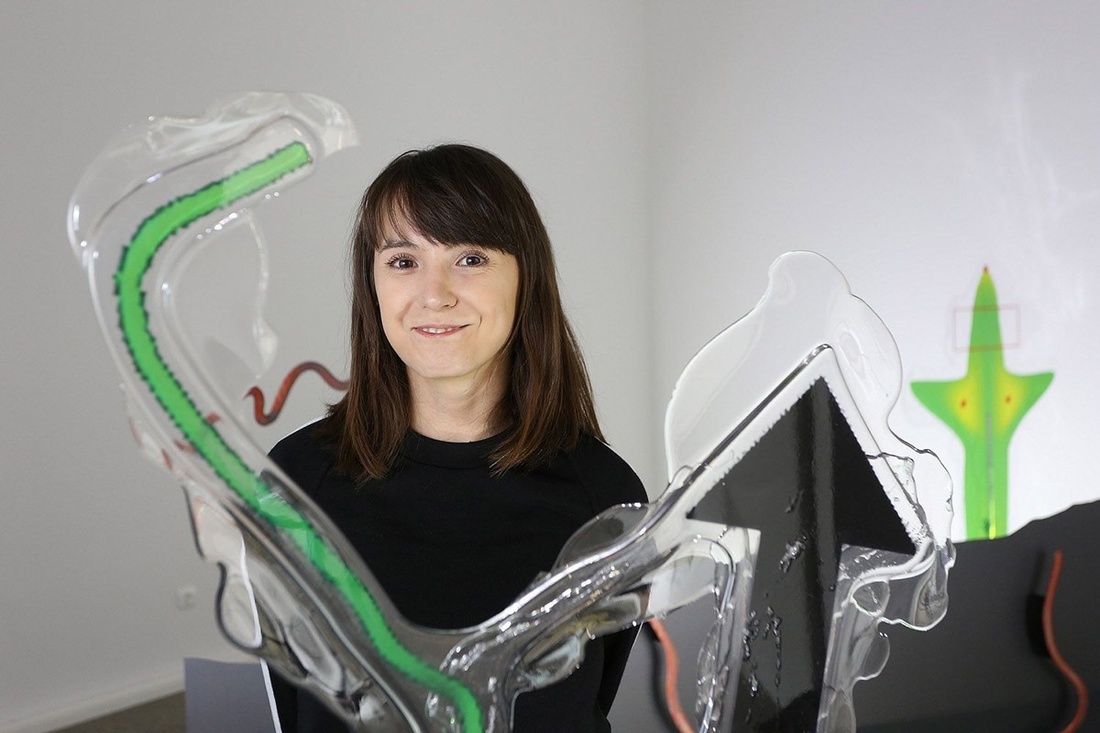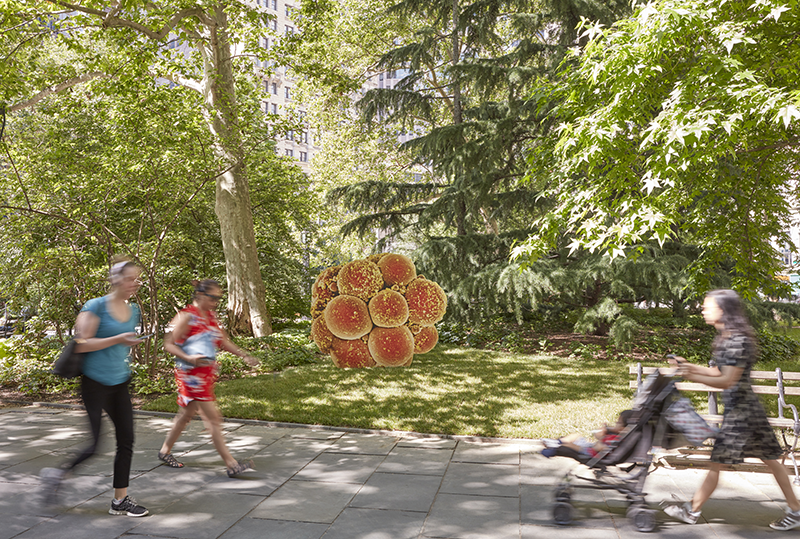Katja Novitskova
Tallinn, Estonia, 1984Katja Novitskova, lives and works in Amsterdam. She was artist in residence at the Rijksakademie van Beeldende Kunsten in Amsterdam from 2013 to 2014.
Her work has been exhibited internationally in solo and group exhibitions including Museum für Gegenwartskunst Siegen (2023, solo); Fries Museum, Leeuwarden (2023, solo); Stavanger Art Museum, Norway (2023); Marta Herford Museum, Herford (2022); Kraupa- Tuskany Zeidler, Berlin (2022, solo); MUDAM Luxembourg (2021); Kunstfort bij Vijfhuizen (2021, solo); Belgrade Biennal (2021), Migros Museum für Gegenwartskunst, Zürich (2020); Sharjah Art Foundation (2020); Powerlong Museum, Shanghai (2019); Hamburger Bahnhof, Berlin (2019); the 14th Fellbach Trienniale (2019); CCA, Tel Aviv (2019); Marta Herford Museum, Herford (2018); Whitechapel Gallery, London (2018, solo); Kumu Art Museum, Tallinn (2018, solo); Baltic Triennial, Vilnius (2018); the Estonian Pavilion at the 57th Venice Biennale (2017, solo); The Public Art Fund, New York (2017, solo); Cc Foundation & Art Centre, Shanghai (2017, solo); Schirn Kunsthalle, Frankfurt (2017); The Museum of Contemporary Art Kiasma, Helsinki (2017); Kunsthal Charlottenborg, Copenhagen (2017); K11 Art Foundation, Shanghai (2017) and Greene Naftali, New York (2016, solo). Other solo and group exhibitions include Kunstverein in Hamburg (2016, solo); the 9th Berlin Biennale for Contemporary Art (2016); Museum Folkwang, Essen (Nam June Paik Award 2016); Yuz Museum, Shanghai (2016); Okayama Art Summit, (2016); The Museum of Modern Art, New York (2015); 13th Lyon Biennale (2015/2016); Kunsthalle Lissabon (2015, solo); Astrup Fearnley Museum, Oslo (2014); Fridericianum, Kassel (2013) and the CCS Bard, New York (2012). She had her first solo exhibition at Kraupa-Tuskany Zeidler, Berlin, in 2012.
Novitskova’s work tackles the complexity and eventual failures of depicting the world through technologically driven narratives. By uniting art and science to the level of nature, Novitskova brings awareness to the mediation and representation tools used to depict these realms. More specifically, Novitskova’s work focuses on the mapping of biological territories that are no longer outside but rather ‘inside’ biological bodies. The technological devices, such as microscopes or brain scans, used to mediate and depict those alternative geographies are able to merge datasets and biology, altering how biology and technology develop. In Novitskova’s mind ‘the look inside has somehow replaced the gaze into the future.’ From parasitic worms to robotic nurturing or incubating machines, technological devices are not only dominating the inner biological realm, but also the affective one. Novitskova’s adoption of the baby swings as readymades, turning them into sci-fi-like looking creatures, is a wink to new technologies of affection and care, mediated through algorithms and artificial intelligence. Those works bring up memories of the alien depicted by science fiction, as well as the role of the non-human in a hypothetical not so distant future.
In 2018 the publishing house Ringier released their Annual Report with a commission of Novitskova. Between 2017 and 2018 her third artist book ‘If Only You Could See What I’ve
Seen with Your Eyes’ with Kumu Art Museum and Venice Biennale.


